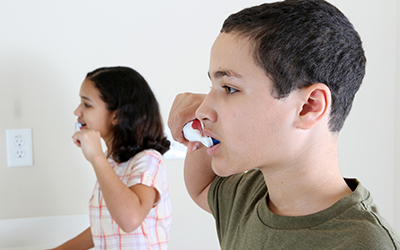Answers You Can Trust — Clear, Friendly Guidance for Your Dental Care Questions.
What kind of toothbrush is most recommended?
We recommend using a soft-bristled toothbrush for optimal gum and tooth health. Softer bristles are gentle on enamel and gums while still being effective at removing plaque. A smaller brush head is also ideal, as it allows better access around each tooth. For kids, the Philips Sonicare for Kids is a highly rated option that combines effectiveness with fun, interactive features.
Latest Blog Articles
Your kids smile matters just as much as your own! Our blog covers a variety of topics including children’s dental health, updates in the dental industry, tips for maintaining healthy habits, and fun oral health facts. Check back each month for new insights and helpful resources.

The Role of Baby Teeth in Healthy Development
Dec 22, 2025
Many parents wonder how important baby teeth truly are, especially knowing they eventually fall out. In reality, primary…

Fun Brushing Motivation
Dec 8, 2025
Building healthy brushing habits begins with making the experience enjoyable. Many parents turn to a trusted kids’ dentist,…

The Hidden Impact of Sugar on Young Smiles
Nov 24, 2025
Sugar is one of the biggest culprits behind tooth decay and other oral health issues in children. While most parents…

When Should Kids Start Flossing?
Nov 10, 2025
One of the most common questions parents ask a children’s dentist is, “When should my child start flossing?” The answer may…


